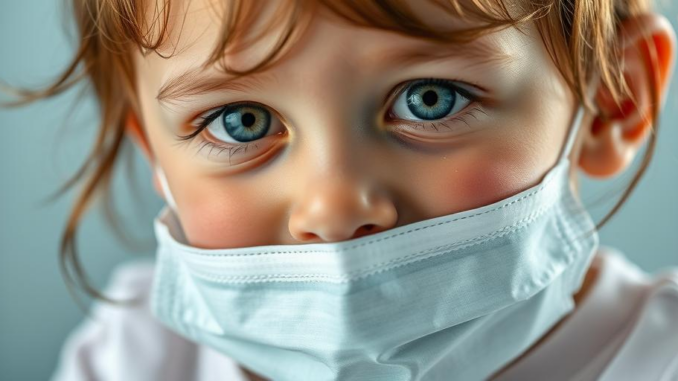
Summary
This article explores the recent discovery of a link between elevated uric acid levels and life-threatening outcomes in children with severe malaria. It discusses the potential implications for treatment strategies and highlights the need for further research into the role of uric acid in pediatric critical care. This discovery underscores the importance of continued advancements in pediatric care, especially for severe illnesses like malaria.
Secure patient data with ease. See how TrueNAS offers self-healing data protection.
Main Story
Okay, so you know how we’ve been seeing more and more about uric acid and its link to adult health issues? Well, it turns out elevated uric acid levels, or hyperuricemia, could be a real game-changer in how we approach pediatric critical care, especially when it comes to severe malaria. Basically, some new research points to a concerning connection between high uric acid and worse outcomes for kids fighting this disease.
And I’m not just talking about feeling a little under the weather; this could be a factor in increased mortality and even long-term neurodevelopmental problems. Think about the implications for areas where malaria is rampant. It’s pretty significant, right?
A recent study published in Nature Medicine, conducted by researchers from Indiana University and Makerere University in Uganda, really drives this point home. They looked at two separate groups of Ugandan children with severe malaria and found that a quarter of them had hyperuricemia. That’s a surprisingly large number when you consider that we’re talking about children.
So, what’s causing this? The researchers found that the breakdown of infected red blood cells and kidney injury were the main culprits. If the kidneys aren’t functioning properly, they can’t get rid of the excess uric acid. Which then just hangs around in the blood, and that’s obviously not good. The study linked hyperuricemia to coma, anemia, a higher risk of death during and after hospitalization, and – perhaps most devastatingly – long-term cognitive impairment. Seriously, it was alarming how many kids who died from malaria also had hyperuricemia.
What’s more, the study showed that kids with hyperuricemia often had a higher prevalence of bad gut bacteria. These bacteria can then mess with the gut lining and potentially trigger sepsis. See, it’s all connected and it just underscores how serious hyperuricemia can be in this context. It’s one thing after another.
Therefore, shouldn’t we look into uric acid-lowering medications as an add-on treatment for severe malaria? Because if that’s proven effective it could be amazing. There are several medications out there, such as allopurinol and febuxostat, that can do just that. But, of course, it’s not that simple. These drugs aren’t without their own set of potential side effects, so we need to tread carefully, particularly with children. For instance, while allopurinol is effective, it can, in rare cases, cause some pretty severe skin reactions. And febuxostat, which is newer, might be a better option for children with kidney issues. It’s a delicate balance, isn’t it?
This research really puts hyperuricemia front and center. I mean it suggests a real potential for better treatment strategies, which is obviously what we’re all aiming for. More research is definitely needed before we jump to any conclusions about uric acid-lowering treatments. However, this is a promising new direction and could help improve outcomes for children suffering from this terrible disease. It is a big step forward in pediatric care.
And it doesn’t stop there. Hyperuricemia is showing up as an important factor in other pediatric health conditions as well, especially those related to things like obesity, metabolic syndrome, Down syndrome, congenital heart disease, and kidney disease. You know, the more we learn, the more interconnected everything seems to be. Importantly we must consider age and sex-related reference values when defining hyperuricemia in children, these values tend to fluctuate.
Looking ahead, future studies should explore the broader role of uric acid in pediatric health, and explore the efficacy of uric acid-lowering therapies for a range of conditions. It’s possible that we could drastically improve the lives of children facing serious illnesses just by paying attention to something as seemingly basic as uric acid levels. What do you think? It’s definitely something worth keeping an eye on.


So, bad gut bacteria exacerbate the issue? Does this mean that along with lowering uric acid, future malaria treatment plans will include targeted probiotics? Asking for all the microbiomes out there.
That’s a fantastic point! The interplay between gut bacteria, uric acid, and malaria outcomes is definitely an area ripe for investigation. Targeted probiotics, alongside uric acid management, could indeed become part of a more holistic treatment strategy. It’s exciting to think about the possibilities!
Editor: MedTechNews.Uk
Thank you to our Sponsor Esdebe
So, high uric acid is like the unwanted guest crashing the malaria party. But if kidney injury is a main cause, are we accidentally creating a vicious cycle? Treating the malaria damages the kidneys, the kidneys can’t clear the uric acid and the high uric acid makes everything worse. Is there a way to intervene early?
That’s a brilliant analogy! You’ve hit on a key point about the potential for a vicious cycle. Early intervention strategies, like monitoring kidney function during malaria treatment, are critical and warrant further investigation. Perhaps proactive support for kidney health could mitigate the hyperuricemia risk. Excellent food for thought!
Editor: MedTechNews.Uk
Thank you to our Sponsor Esdebe